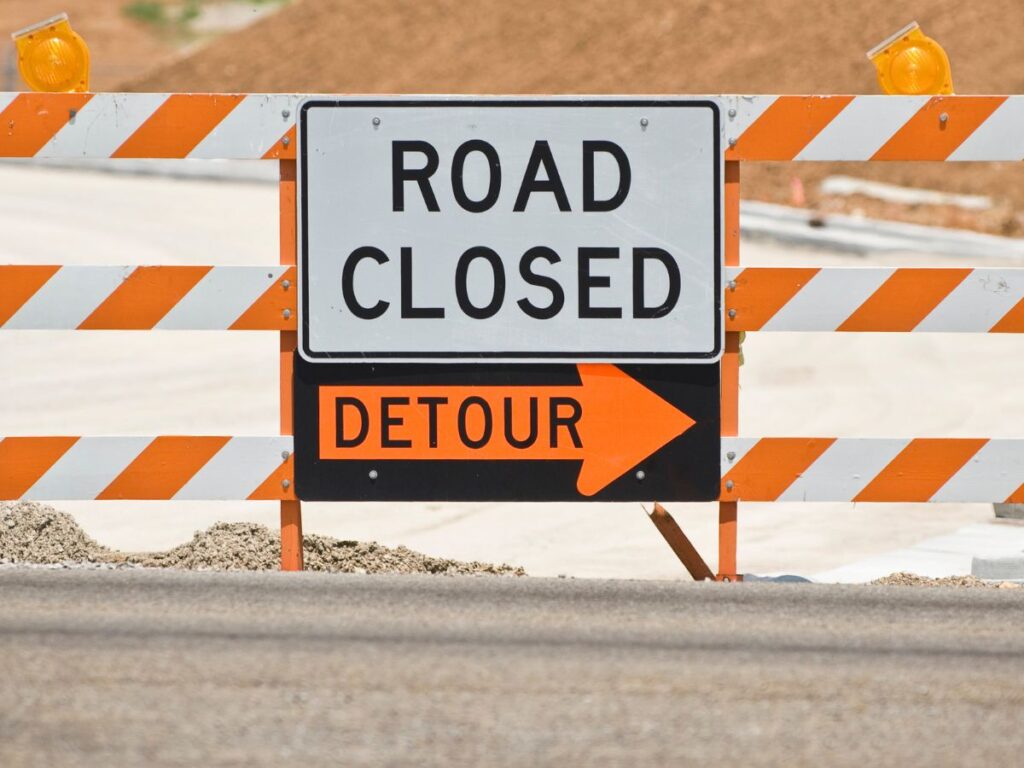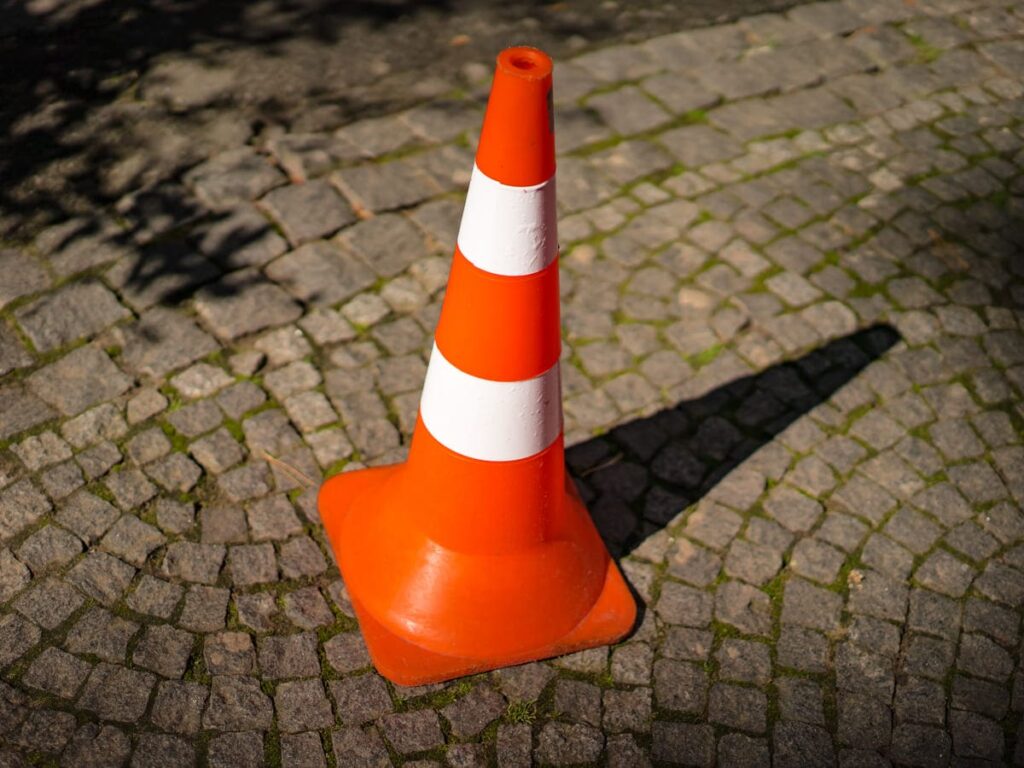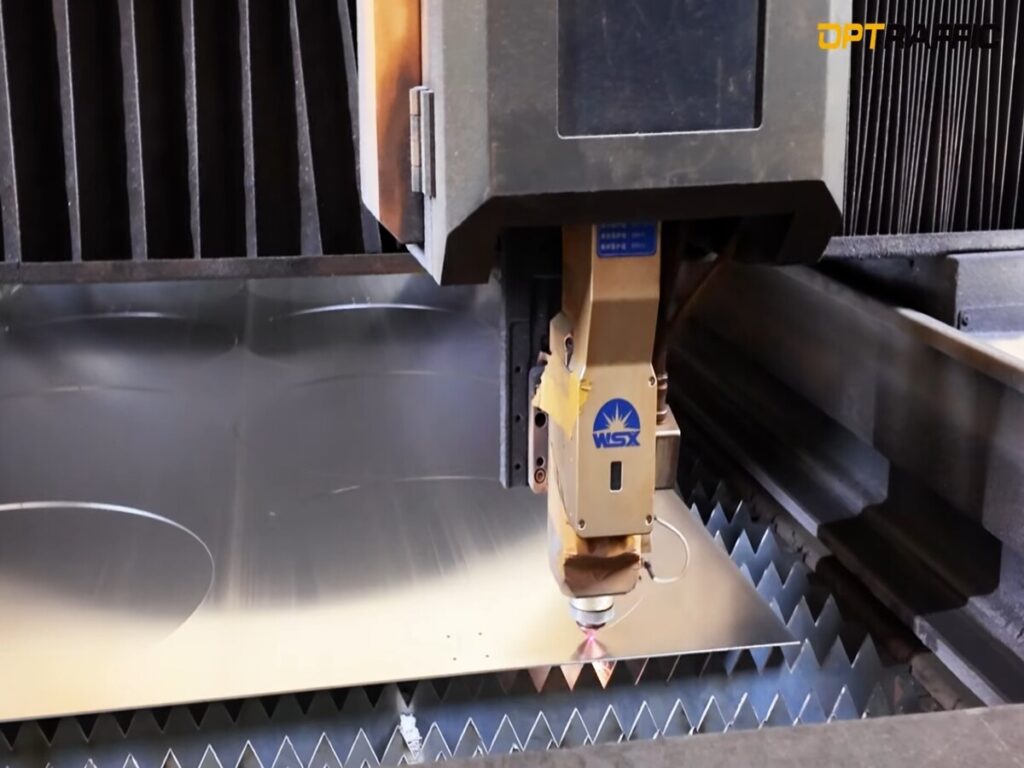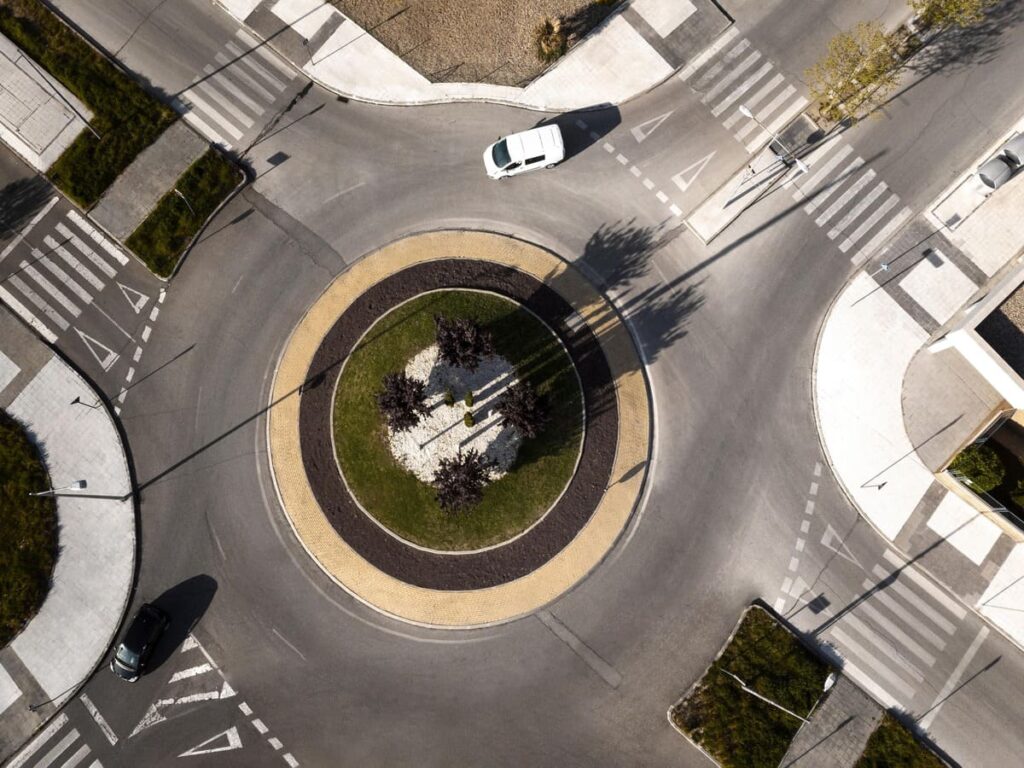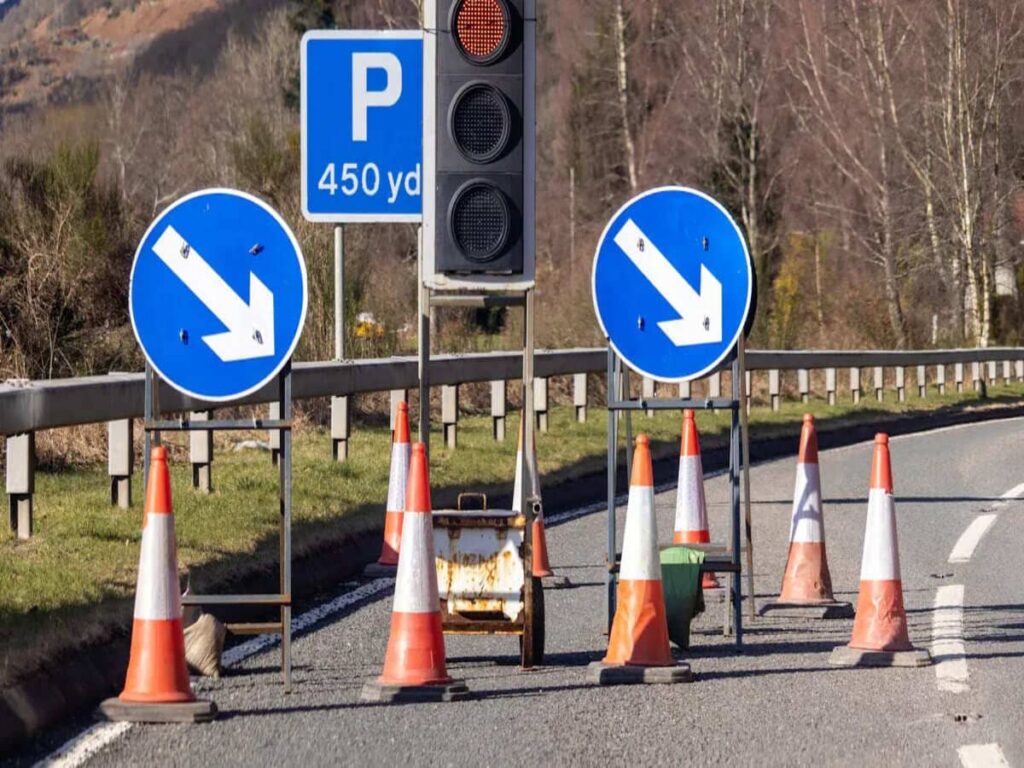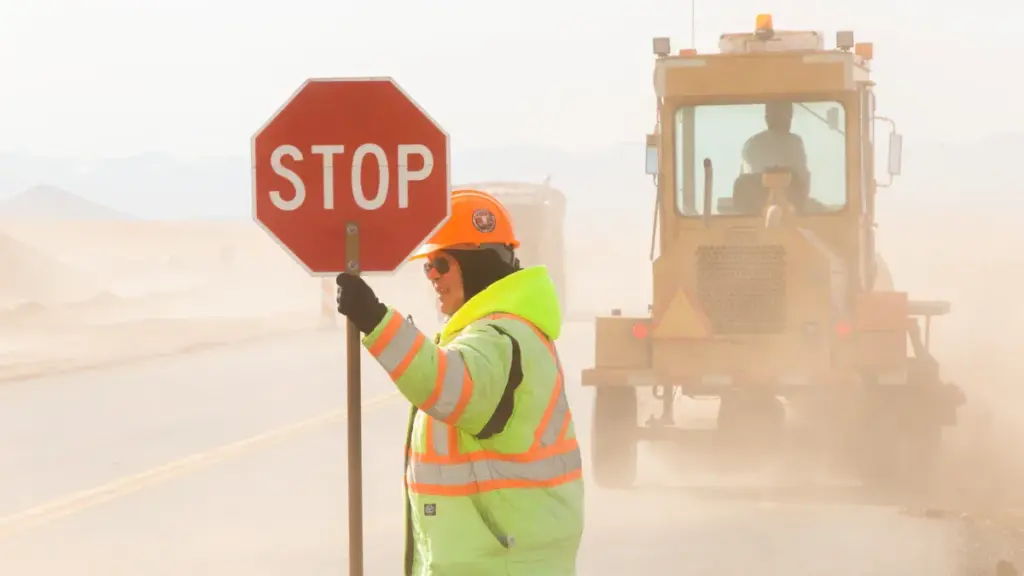
I grandi segni di alluminio sono molto importanti per il traffico e il lavoro su strada. IL Peso di questi segni colpisce ogni passaggio. Ciò include lo spostamento e la messa in scena dei segni. Segni di alluminio, soprattutto con leghe avanzate, sono più leggeri dell'acciaio. Questo aiuta i camion a usare meno carburante e semplifica il rimorchio. I segni più leggeri sono più veloci e più facili da montare. Questo è utile se hai bisogno di spostarli molto. L'alluminio non arruggini con l'acciaio. Ciò significa che spendi meno soldi riparandoli nel tempo. Ma gli esperti devono ancora verificare la presenza di danni. Questo fa funzionare bene i segni per molto tempo.
A Optraffic, Forniamo durevole, leggero segni di alluminio Progettato per l'efficienza, sicurezza, e prestazioni durature. I nostri prodotti ti aiutano a risparmiare sui trasporti, installazione, e manutenzione mentre si incontrano rigorosi standard di traffico e lavoro stradale.
Takeaway chiave
- I grandi cartelli in alluminio pesano meno dei segni in acciaio. Questo li rende più facili da spostare e installare. Sono anche più facili da trasportare. I segni più leggeri usano meno carburante e costano meno denaro.
- Il peso di un segno dipende dalle sue dimensioni e spessore. Anche il tipo di lega di alluminio è importante. I segni più grandi e più spessi pesano di più. Questi segni possono resistere meglio al vento forte.
- Hai bisogno di attrezzature speciali per gestire, negozio, e sposta i segni. Le fasi di sicurezza aiutano a fermare danni e incidenti.
- L'installazione dei segni richiede in modo sicuro gli strumenti giusti. I lavoratori qualificati sono importanti. I segni hanno bisogno di supporti forti per rimanere fermi in qualsiasi tempo.
- Regole e registri di peso aiutano a mantenere i segnali al sicuro. Questo aiuta i segni a durare più a lungo sulla strada.
Grandi segni di alluminio: Peso e dimensioni
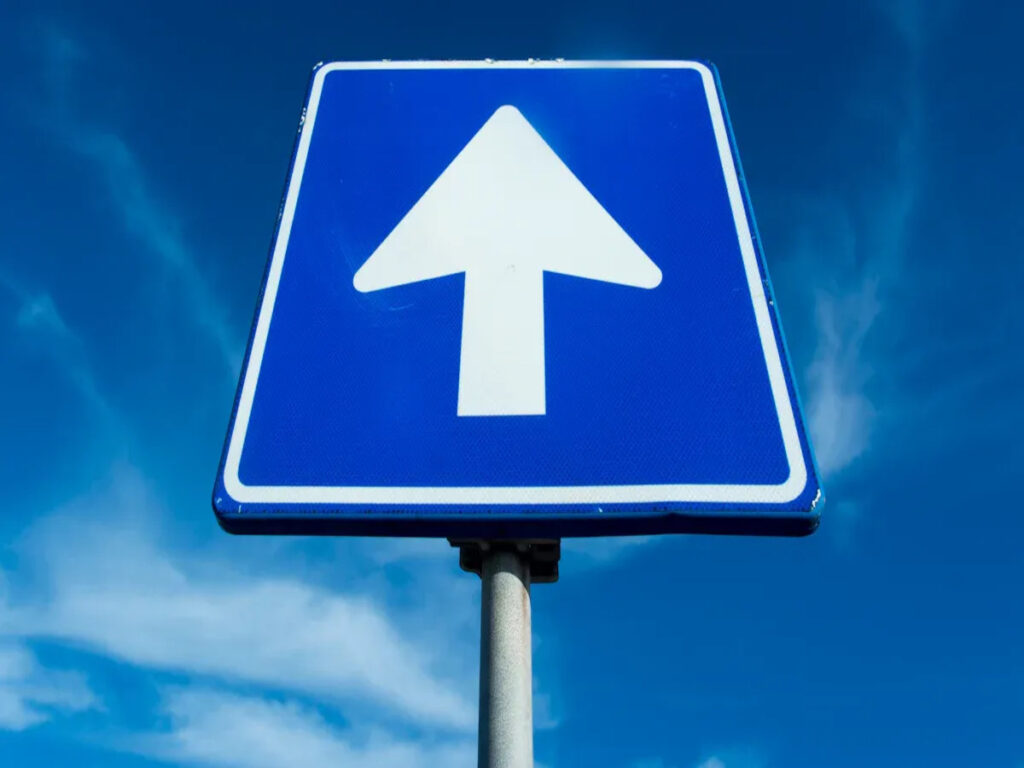
Dimensioni e applicazioni tipiche
Grande segni di alluminio Aiuta a mantenere i conducenti al sicuro. Forniscono informazioni importanti sulle autostrade e nelle zone di lavoro. I segni devono essere grandi, quindi i conducenti li notano. Sono necessarie istruzioni chiare in aree frenetiche o veloci. Le dimensioni e lo spessore cambiano in base a dove va il segno. Dipende anche da ciò che dice il segno.
| Misurare (pollici) | Uso consigliato |
|---|---|
| 30 X 30 | Utilizzato per strade regolari e cartelli stradali (Regole MUTCD) |
| 36 X 36 | Utilizzato per strade veloci e luoghi con molte corsie |
| 48 X 48 | Utilizzato nelle zone di lavoro o nelle aree trafficate con molte auto |
La maggior parte dei grandi segni di alluminio sono 0.80 pollici di spessore. Questo li rende forti per l'uso all'aperto. Li mantiene anche facili da muoversi e mettono. I produttori usano l'alluminio anodizzato 5052-H38. Questo tipo non arruggini facilmente e dura con il maltempo. Ogni segno ha uno strato luccicante che si incontra Regole MUTCD. Questa parte lucida aiuta i conducenti a vedere i segni giorno e notte, Anche quando piove.
I grandi segni di alluminio hanno molti lavori. Sulle autostrade, Mostrano limiti di velocità e direzioni di corsia. Avvertono anche dei pericoli. Nelle zone di lavoro, Raccontano ai conducenti le deviazioni e i cambiamenti di corsia. I segni devono essere facili da vedere da lontano. Le dimensioni e lo strato lucido contano tanto quanto le parole.
Fattori che influenzano il peso
Molte cose cambiano quanto un segno pesa. Le dimensioni e spessore dell'alluminio contatta di più. Fogli più spessi usano più metallo e pesa di più. I segni più grandi hanno più spazio e sono più pesanti. Lo spessore dell'alluminio è chiamato calibro. Un numero di scartamento inferiore significa che il segno è più spesso e più pesante. Per esempio, 11 il calibro è più spesso di 16 misura.
- L'alluminio più spesso smette di piegarsi e scuotere. Questo è buono per grandi segni in luoghi ventosi.
- I segni sulle pareti possono essere più sottili. I segni in piedi da soli o nel vento hanno bisogno di metallo più spesso.
- Il rivestimento in polvere aggiunge un po 'di peso, Di 4-5%.
- I rivestimenti lucenti aiutano i conducenti a vedere ma non aggiungere molto peso.
Le persone che lavorano con i segnali stradali pensano al peso durante la pianificazione. Scegli dimensioni del rimorchio e camion in base al peso totale. Un buon equilibrio del peso mantiene i segni sicuri mentre si muovono. Segnali pesanti hanno bisogno di forti supporti e più lavoratori per metterli su. Scegliere le modifiche solide in alluminio o pannelli più leggeri del costo e quanto sono facili da usare. I pannelli solidi costano di più e hanno bisogno di supporti forti. I pannelli più leggeri sono più facili da montare ma potrebbero non durare così a lungo.
Mancia: Controlla sempre il peso e le dimensioni prima di acquistare un cartello. Questo rende i segnali in movimento e mettono in piedi più sicuri e più facili. Aiuta anche a seguire le regole di sicurezza.
I segni con strati lucenti devono essere forti, leggero, e duro. Il mix giusto aiuta il traffico a muoversi bene e mantiene tutti al sicuro.
Gestione e trasporto di segni
Requisiti di trasporto
Spostare grandi segni e barriere in alluminio non è facile. Questi oggetti sono grandi e pesanti. Camion speciali come i lettori piatti li portano. I lavoratori confezionano i cartelli con casse, pallet, e schiuma. Questo li tiene al sicuro dai danni. I carrelli elevatori o i refliti aiutano a spostare i segni 100 sterline.
- I teloni piatti e le cinghie trattengono i cartelli stabili sul camion.
- I segni di carico oversize riflettenti e incernierati avvertono altri driver.
- Le aziende di merci usano catene e rack per ulteriore sicurezza.
- Imbottitura extra o scatole speciali proteggono barriere pesanti.
I grandi carichi necessitano di permessi speciali e documenti. I conducenti pianificano i percorsi per evitare problemi. Seguono le regole federali. Team abili spostano queste spedizioni per mantenere tutti al sicuro.
Nota: È molto importante proteggere e contrassegnare grandi segni di alluminio e barriere per il trasporto sicuro.
Metti di conservazione e mane di conservazione
La memorizzazione e lo spostamento dei cartelli in alluminio presso il sito di lavoro necessita di pianificazione. I lavoratori usano scatole forti, casse, e schiuma per fermare i graffi. I carrelli elevatori e i jack pallet aiutano a spostare i segni pesanti. I team utilizzano metodi di caricamento sicuri per fermare gli incidenti.
Sul posto, Gli equipaggi scelgono il modo migliore per scaricare i segni. I lavoratori qualificati gestiscono grandi segni con gru o rigging. L'alluminio è leggero, Quindi gli equipaggi lavorano più velocemente. Questo risparmia tempo e mantiene i progetti in pista. L'alluminio non si arrugginisce facilmente, Quindi i segni richiedono meno fissaggio.
I costi di spedizione e il tempo del progetto dipendono dal peso e dalle dimensioni del segno. I segni più leggeri sono più facili da spostare e installare. Le barriere più pesanti hanno bisogno di più tempo e lavoro.
Segno Installazione e sicurezza
Equipaggiamento e esigenze di manodopera
Mettere su grandi segni di alluminio necessita di una buona pianificazione e gli strumenti giusti. Gli ancori e i titoli di servizio pesanti mantengono i cartelli ben. Gli equipaggi usano l'hardware del tappo a vite per nascondere come sono montati i segni. Questo rende i segni puliti. I kit di installazione hanno viti, nastro in schiuma, e distanziali per molte superfici e dimensioni. Viti e distanziali funzionano meglio sul legno. Il nastro a doppia faccia come il nastro VHB è buono per luoghi bagnati o caldi. Hardware e binner di recinzione aiutano a collegare segni a pali o pali. Materiali forti come l'acciaio inossidabile o l'alluminio fuso senza ruggine rendono l'hardware più a lungo. Questi mantengono il segno stabile. I lavoratori qualificati usano gru o carrelli elevatori per sollevare segnali pesanti in sicurezza.
Mancia: Lasciare che i professionisti installino i cartelli arrestano i danni e li mantengano al sicuro in qualsiasi tempo.
Sicurezza e stabilità del sito
Mantenere un sito sicuro implica la garanzia di segni contro il vento aggiungendo pesi come sacchi di sabbia o basi di gomma. I sabbiati devono essere strettamente sigillati e distribuiti per evitare danni all'acqua, mentre le basi di gomma stabilizzano i segni e riducono i rischi di inciampo. Le ancore e le cinghie di terra sono efficaci per il terreno morbido, e i segni con i fori del pannello consentono di passare il vento. Gli equipaggi dovrebbero controllare abitualmente pesi e ancoraggi, Posizionare i segni vicino alle barriere del vento, e regolare o rimuovere i segni leggeri durante le tempeste.
Nota: Questi passaggi impediscono ai segnali di cadere e proteggere i lavoratori e i conducenti.
Le regole dicono che i segni devono essere sicuri se colpiti, Abbastanza forte da mantenere il proprio peso, e in grado di resistere al vento. Gli equipaggi devono seguire queste regole per mantenere tutti al sicuro e assicurarsi che i segni rimangono messi.
Limite di peso e conformità
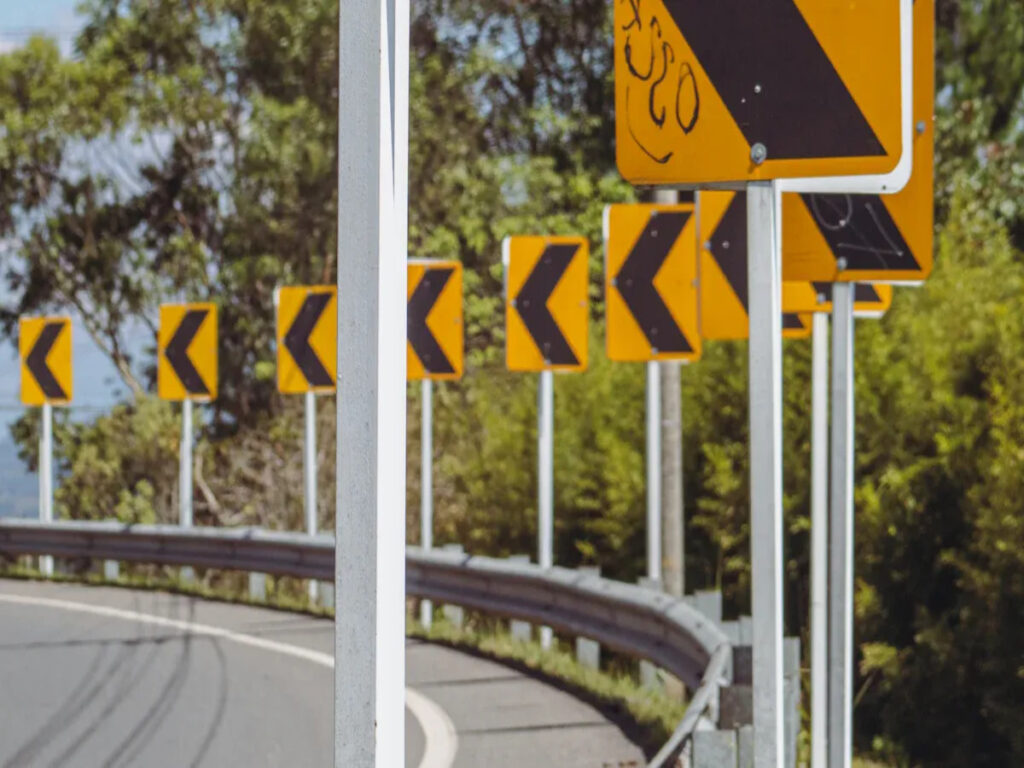
Standard normativi
I grandi segnali stradali in alluminio devono seguire rigide regole per la sicurezza e la forza. Il MUTCD dà regole su quanto dovrebbero essere i segni luminosi e chiari. ASTM D 4956 racconta che tipo di fogli retroreflettiti da usare. Questo influisce su quanto durano i segni e quanto siano facili da vedere. Leghe di alluminio come 5052, 5454, E 5754 sono forti ma non pesanti. Non arrugginano facilmente. Per cartelli sopra le strade o per le regole, I produttori usano 6061 lega perché è ancora più forte. Queste scelte aiutano i segnali a durare con un brutto tempo e un sacco di utilizzo. Il foglio riflessivo oralite incontra le regole MUTCD e ASTM. Funziona bene fuori per molto tempo. I lavoratori devono verificare che ogni segno non sia troppo pesante e abbia il giusto supporto prima di metterlo su.
- Oralite 5400: Segue MUTCD e ASTM D 4956 Tipo I., Classe 1.
- Oralite 5900: Realizzato per segnali stradali all'aperto, Tipo IV, Classe 1.
- Oralite 7900: Utilizzato per il controllo permanente del traffico, Tipo IX, Classe 1.
- Oralite 9900: Fogli di alta qualità, Tipo XI, Classe 1.
- Oralite 5061 Laminato: Dà una protezione UV ulteriore.
Considerazioni sulla progettazione strutturale
Gli ingegneri pensano alla sicurezza degli incidenti, peso, e vento quando si fa grandi barriere in alluminio. La tabella seguente mostra importanti esigenze per limiti di peso e supporto:
| Aspetto | Requisito / Spiegazione |
|---|---|
| Crashworthness | I supporti devono essere sicuri in arresti anomali per i segni 50 sq ft, Usando i post in fuga con almeno 7 ft di spazio. |
| Definizione | Crashworthy significa superare i crash test nazionali, Come il rapporto NCHRP 350. |
| Carico morto & Vento | Non ci sono regole di peso o vento, Ma i segni devono rimanere svegli nel tempo. |
I lavoratori scrivono il limite di peso per ogni segno e barriera. Notano anche tonnellate per asse per lo spostamento e l'impostazione. Forti leghe di alluminio aiutano a mantenere i segni difficili ma non troppo pesanti. I segni permanenti sui post devono essere almeno 7 ft alto nelle città. Barriere temporanee usano supporti mobili e devono essere almeno 1 ft alto. Entrambi i tipi devono superare i test di sicurezza degli arresti anomali. La modifica dei supporti può infrangere le regole, Quindi i team non cambiano progetti testati con crash.
Mancia: Annota sempre il limite di peso e supporta i dettagli per ogni barriera in alluminio. Questo aiuta a seguire le regole di sicurezza e fa muovere il traffico.
Segni permanenti e temporanei hanno bisogno di modi diversi per essere messi, Ma entrambi devono seguire le regole di peso e resistenza. Gli ingegneri scelgono la migliore lega di alluminio e supporto per ogni barriera. Controllano il limite di peso per asse quando si muovono e installano i segni per arrestare i sovraccarichi. Una buona pianificazione e registri aiutano i lavoratori a seguire le regole e mantenere ogni lavoro di traffico sicuro.
Ordini di massa e scelte materiali
Ordinamento e comunicazione dei fornitori
I project manager devono fornire ai fornitori dettagli chiari per grandi ordini. Devono dire la forma, Come il rettangolo, piazza, o personalizzato. Dovrebbero elencare la dimensione esatta per ogni segno. Alcuni segni sono piccoli, come 4″ X 4″. Altri sono grandi, come 48″ X 94″. Se sono necessari accessori, I manager dovrebbero elencare i difensori, cravatte zip, o strisce di montaggio. Il numero di segni è importante per gli sconti. Più segni possono significare una stampa inferiore costi. I manager condividono anche i dettagli tecnici, Come la dimensione del cerchio più piccola che racchiude. Raccontano il rapporto di estrusione e avevano bisogno di tolleranze. Questi fatti aiutano i fornitori a scegliere le giuste dimensioni della stampa. Questo si assicura che le barriere corrispondano a tutte le esigenze del progetto. I manager parlano anche di controllo di qualità. Vogliono materie prime certificate e controlli regolari. Questo aiuta ogni spedizione a soddisfare gli standard del progetto.
I costi di spedizione dipendono dal peso, misurare, E dove vanno i segni. L'invio agli indirizzi aziendali può risparmiare denaro. I grandi ordini riducono i costi di spedizione per ogni segno. Mescolare le barriere di luce e pesanti aiutano a risparmiare di più. Tempo di consegna e cambio di costo per magazzino e tipo di spedizione. La spedizione rapida è possibile per lavori urgenti.
Specifiche materiali e leghe
L'alluminio è la scelta migliore per le barriere del lavoro su strada. È facile da riciclare e non costoso. Funziona bene per le sue forti proprietà in alluminio. La maggior parte delle grandi barriere utilizza pannelli in alluminio estruso. Questi pannelli sono almeno 0.081 pollici di spessore. La foglio riflettente va in cima per rendere i segni più facili da vedere. Il foglio segue le regole ASTM D4956. Deve rimanere bloccato e non essere danneggiato quando gestito. Dura a lungo. La tabella seguente mostra i dettagli della barriera comuni:
| Aspetto delle specifiche | Dettagli |
|---|---|
| Materiale | 5052-H38 Alodizzato in alluminio per durata e resistenza alla corrosione |
| Spessore | Di 0.080 pollici |
| Angoli | Angoli del raggio federale standard |
| Buchi di montaggio | Due 3/8″ buchi, in alto e in basso centrati |
| Tipi di fogli riflettenti | Grado ingegnere (PER ESEMPIO), Prismatico ad alta intensità (ANCA), Grado di diamanti (Dg) |
| Conformità | Soddisfa gli standard MUTCD |
| Dimensioni | 30″X30″, 36″x36″, 48″x48″ |
| Scopo del foglio | Rende i segni facili da vedere giorno e notte |
La lega che scegli cambia quanto sono forti e pesanti barriere. 5052 La lega non arruggini facilmente, Anche vicino all'acqua salata. Non si mette molto molto nei test di spruzzatura salina. Inoltre non si spezza per lo stress. 6061 La lega è più forte ma ha bisogno di trattamenti extra per fermare la ruggine. La differenza di peso tra queste leghe è molto piccola, come mostrato qui:
| Lega di alluminio | Densità (g/cm³) | Impatto del peso |
|---|---|---|
| 5052 | 2.68 | Un po 'più leggero per unità di volume, quasi nessuna differenza di peso rispetto a 6061 |
| 6061 | 2.70 | Un po 'più pesante per unità di volume, quasi nessuna differenza di peso rispetto a 5052 |
I team dovrebbero utilizzare segni di archiviazione in blocco con codici a barre ed etichette chiare. Mantieni le barriere nelle loro scatole originali, pallet, o casse. Usa nastro di sicurezza e segni per contrassegnare navate e punti di stoccaggio. I posizionatori di lavoro e i tavoli di sollevamento aiutano a spostare le barriere pesanti in sicurezza. Le etichette di codice a barre forti e i tag di risorse aiutano a monitorare gli oggetti e fermare gli errori.
I professionisti possono trovare dettagli su prodotti e regole da siti Web di fiducia. Questi siti mostrano cose come quanto sia spesso il materiale e come dovrebbero essere i segni luminosi. Spiegano anche le regole per i grandi segnali stradali in alluminio. Per progetti speciali, Parlare con i fornitori di segni esperti è intelligente. Questo si assicura che ogni progetto funzioni bene e segue la legge.
Domande frequenti
Quali fattori determinano il peso di un grande segno di alluminio?
Il peso di un segno dipende dalle sue dimensioni e spessore. Anche il tipo di lega utilizzata è importante. I rivestimenti riflettenti e le parti di montaggio aggiungono un po 'di peso. I segni più grandi e più spessi sono più pesanti. La lega, Piace 5052 O 6061, cambia anche il peso finale.
In che modo l'installazione di impatto sul peso dei segni?
Segnali pesanti richiedono più lavoratori e macchine speciali come le gru. I segni più leggeri sono più facili e veloci da montare. I project manager pianificano il peso. Questo aiuta gli equipaggi a utilizzare gli strumenti giusti e stare al sicuro.
Ci sono regolamenti per il peso massimo dei segnali stradali?
Gruppi come MUTCD e ASTM creano regole per i supporti dei segni e la sicurezza. Non danno un limite di peso rigoroso. Ma i segni devono essere sicuri e stabili per dove vengono utilizzati.
Qual è il modo migliore per archiviare grandi cartelli in alluminio prima dell'installazione?
Conservare i cartelli all'interno su rack o pallet. Tenerli asciutti e lontani dalle sostanze chimiche. Usa l'imbottitura in modo che i segni non vengano graffiati. Etichetta ogni segno per rintracciarli facilmente. La buona conservazione mantiene i segni pronti e in buona forma.
Quale lega di alluminio è più comune per i segnali stradali?
| Lega | Vantaggio chiave |
|---|---|
| 5052 | Resistenza alla corrosione |
| 6061 | Alta resistenza |
La maggior parte dei segni usa 5052 Perché dura a lungo e non arruggini. Alcuni segni usano 6061 Quando è necessaria una forza extra.

